パックラフト・アディクト | #32 モンテネグロ周遊 <前編>タラ渓谷と地底湖をめぐる旅
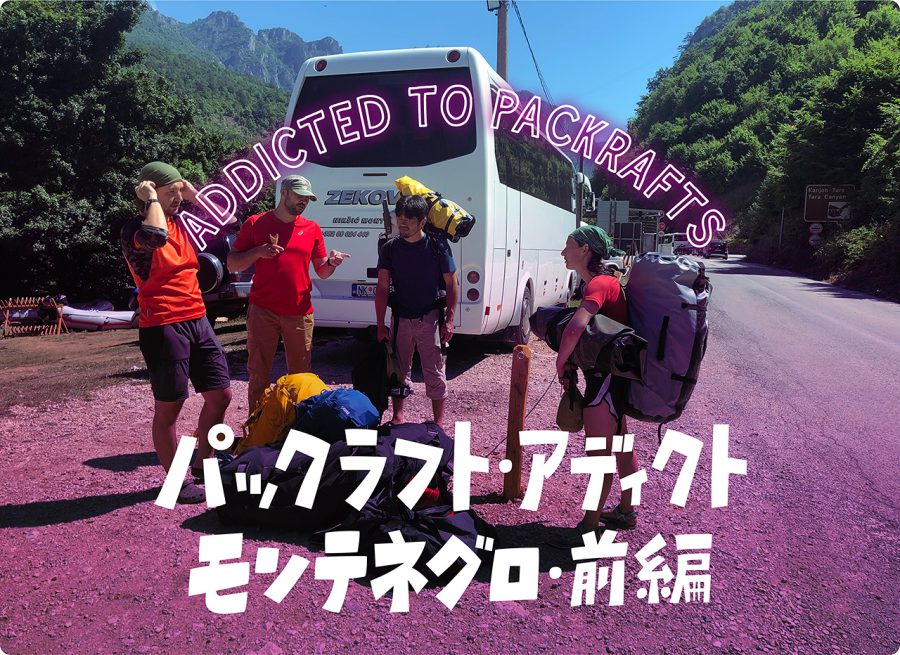
Packrafting Montenegro “ You don’t always get what you want ” (Part 1)
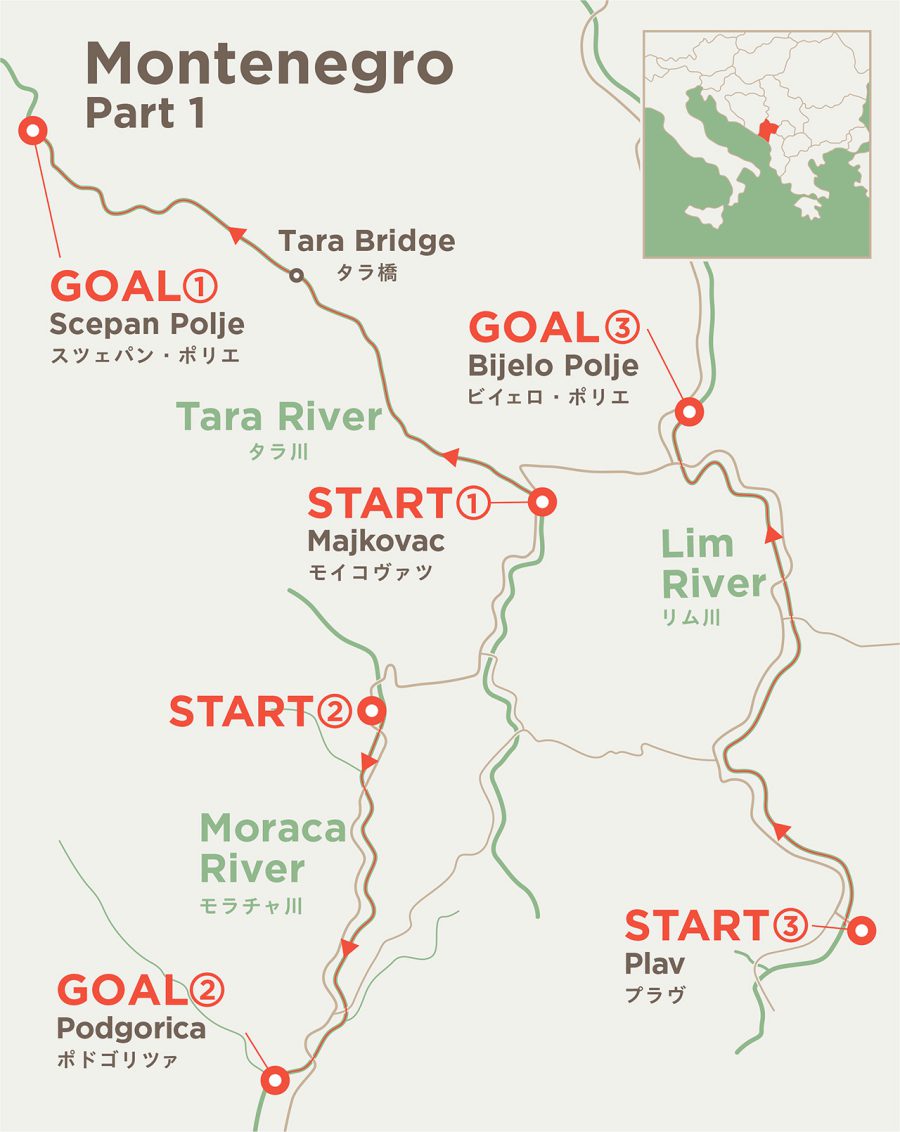
“I don’t think there is enough water,” I tell Shimon, looking at the Morača river, deep down in the canyon below us.
We (Shimon, Živa, Sashuk, Ilmar and I) are on the bus from Podgorica to the put-in point for the second part of our 10-day summer adventure trip in Montenegro. And we are facing the fact that our plan of paddling the Morača canyon down to the capital is unrealistic. That means that we need to come up with a new one and do it fast…
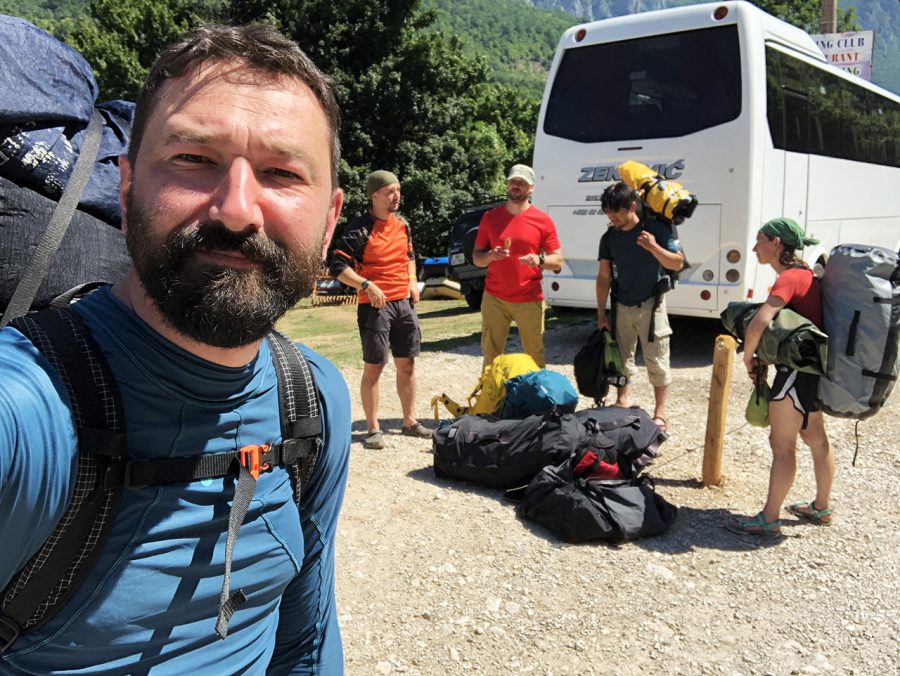
It’s the middle of the summer and the temperatures in the sun easily went over 40 degrees Celsius. It had not rained much during the previous few weeks. Only occasional local storms brought temporary relief and provided much needed water for the rivers. But not everywhere.
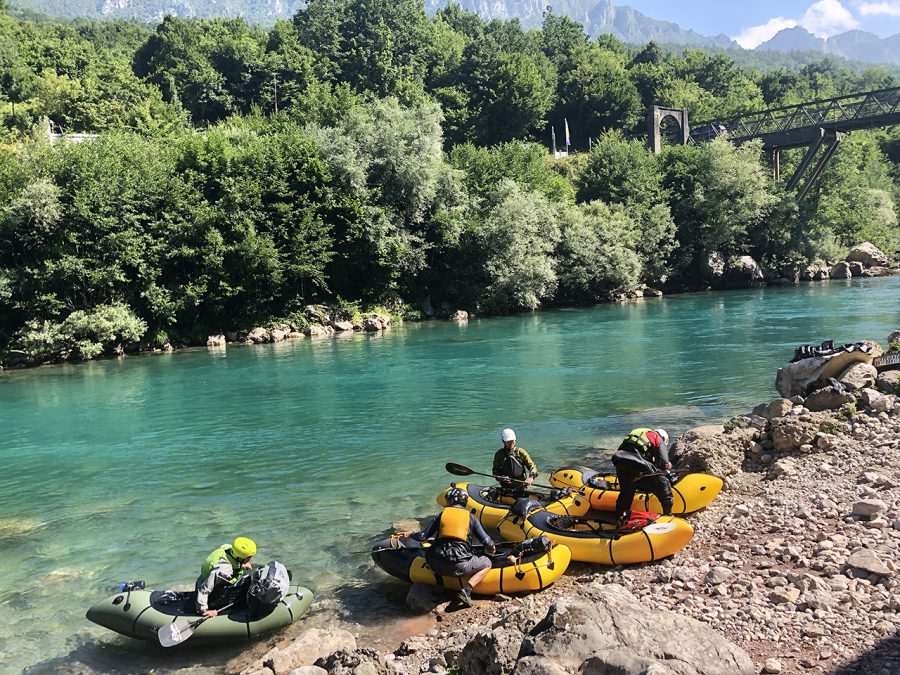
Still, the water level in the Tara was significantly higher than two years before (please my other article about that trip). That is why, unlike then, we could start directly in Mojkovac. We did have to take out and go around the Devil’s Canyon – a Class V section, paddling of which requires special permission at the best of times, which cost us almost 6 hours.
Still we managed to travel fast and finished the river in 5 days.
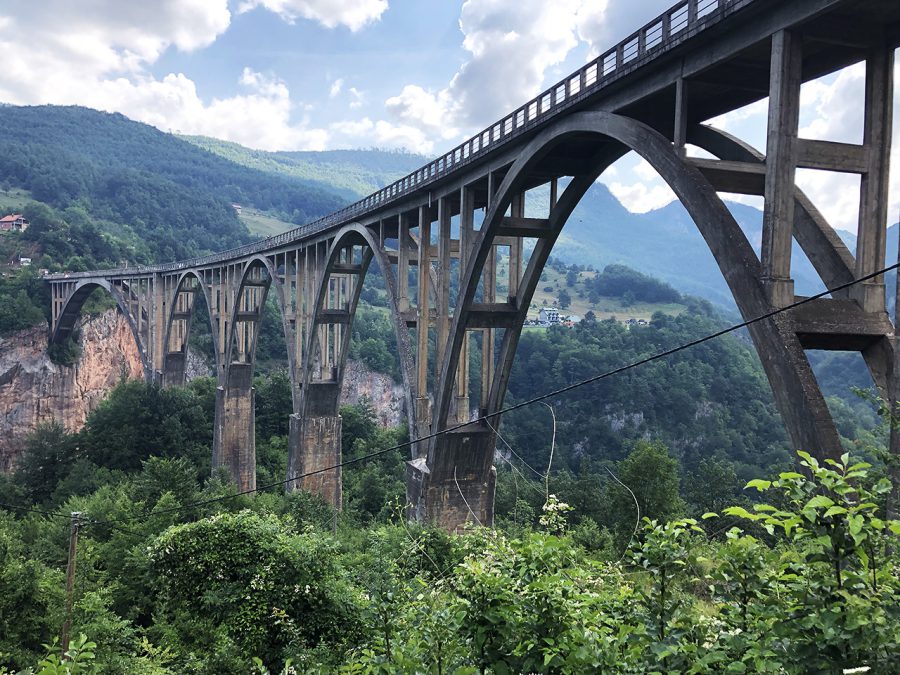
We even had time to explore Đurđevića Tara Bridge, the 365-meter-long bridge with five arches that stands 172 meters above the river. At the time of its completion in 1940, it was the biggest of the type in Europe.
Even now, it is the only place cars can use to cross the Tara Canyon.
Ilmar and I had seen the bridge from below the first time we paddled the Tara. But now we had a chance to walk over it and look at the Tara from above – a narrow silver line of the river cutting through the lush green of the valley, surrounded by greys of high mountains above.
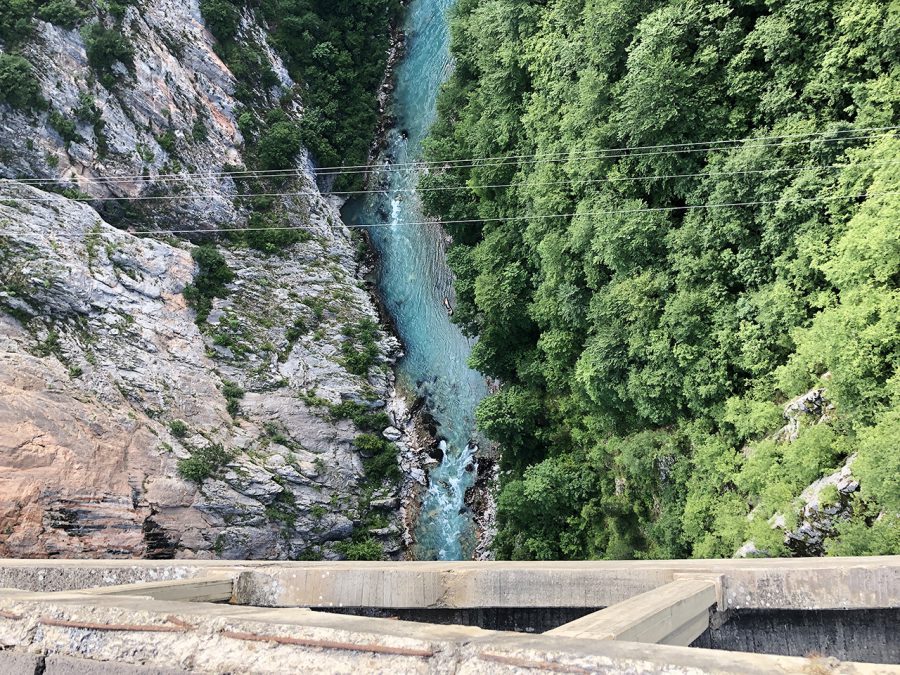
This was partly accidental as we were forced to get two separate paddling permits.
The first one was given to us for one day when we entered the National park. The rangers who gave it to us asked us to come back to the next day for another permit – for the remaining three days. Why they did it this way was not clear to us and they were too reluctant or unable to explain. Which is why the phrase “Why Montenegrin people!?” was born. (We used it many times after that.)
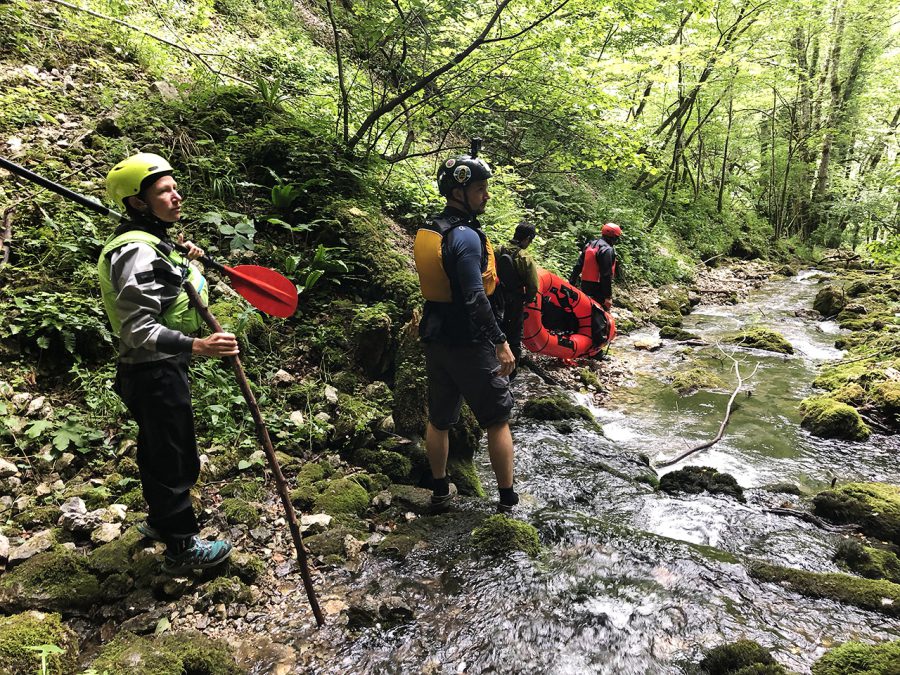
Besides the bridge, we also managed to explore and play around on a hidden underground lake in a cave that is above the most beautiful waterfall on the river. The first time we were there, we also stopped to admire this waterfall, but then we did not know that there was this hidden gem above us.
This time, we took one of the packrafts and hiked up with it to the cave, where we took turns to paddle it.
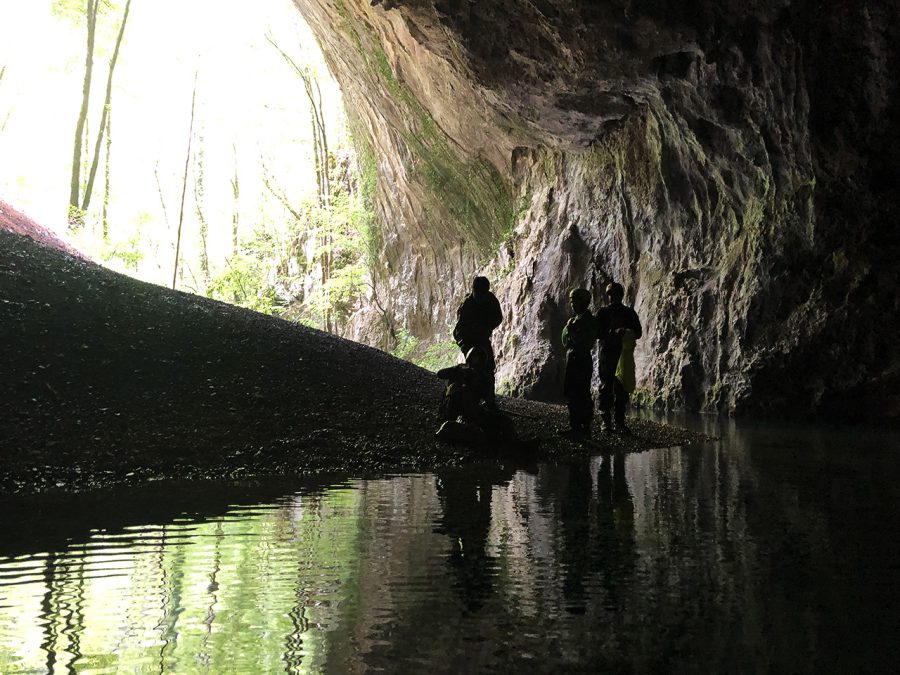
To be honest, we would have missed it this time completely too, if it were not for a tip by Annika from Packraft Touren, who had been there many times before.She knows the local rivers rather well and often brings people on guided tours here. Last year, just a few weeks before we came to Montenegro, she paddled the Tara and the Morača with a group like that. And that’s what we wanted to do as well.
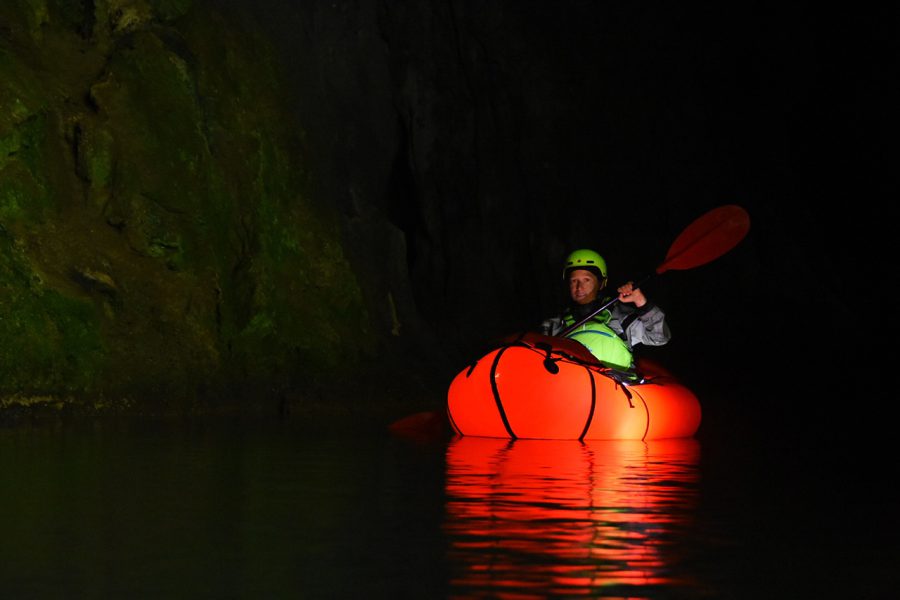
Being a rather small river, the Morača is still very popular for its white-water. It flows from its source in northern Montenegro to Podgorica through a very beautiful, but narrow and deep canyon that is not always easy to access (there is a road running along it for most of the part, but it is high above the river; this narrow road is considered to be very dangerous due to regular car accidents).
The upper 16 km section (between the village of Redice and the Monastery at Morača) are Class IV-V, but down from the Monastery the river is becoming easier and gradually goes from Class III-III+ of the first 18 km to Class I-II of the remaining 22 km to the capital.
After being joined by its main tributary, the Zeta river, the Morača mallows out, becomes broader, and flows slowly over large expenses of Zeta plains before emptying into Lake Skadar.
The main season for running the ww-section of the Morača is between April and June (or in October). But we were there at the end of July and that’s what worried us.
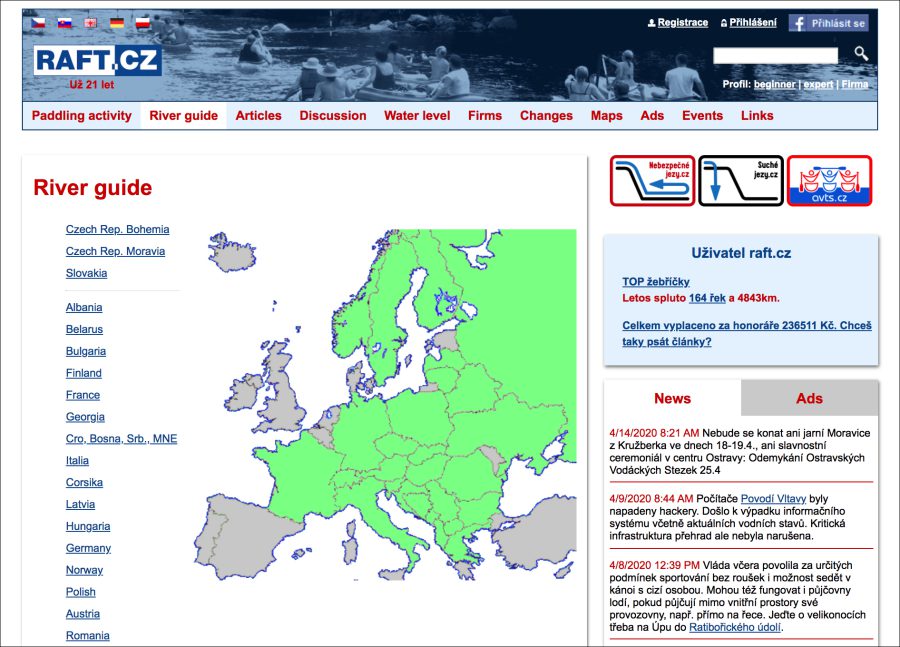
When preparing for the trip, we found a Czech kayaking site that had river information as well as updates on water levels of many rivers in Europe, including the Morača, which we started to follow closely.
And what we saw was that the water level was decreasing. As a matter of fact, by the time we almost finished paddling the Tara, it was below average. But what does it actually mean? Is that still enough for a packraft? We were not certain.
That is why at the last campsite we were staying on the Tara, Camp Grab, we found a local paddler who knew the river well, and asked him what the water levels of the Morača were. To our positive surprise, he said that they were similar to those of the Tara and that it would be ok for us to paddle the river in our packrafts.
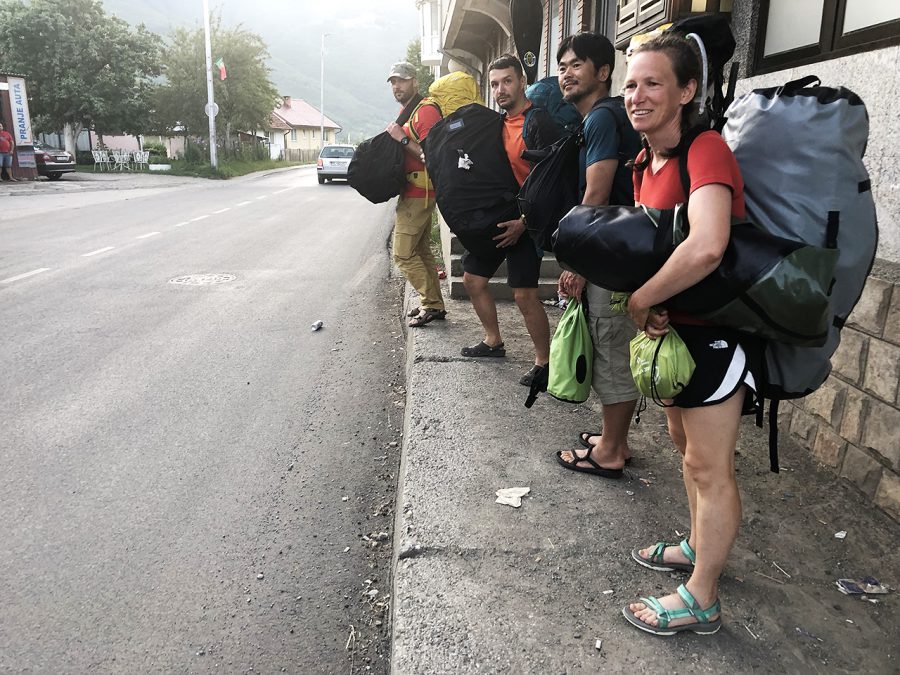
And that was the reason why a day later we were on a bus from Podgorica to Monastery on Morača, catching in despair occasional glimpses of what was left of the river. “I don’t think there is enough water,” I tell Shimon and he agrees with me. (Much later we realised that the local paddler must have misunderstood us and thought that we asked about the difficulty of the river – river level, and not how much water it had – water level; it’s a perfect example of being ‘lost in translation’; “Why Montenegrin people?!”)
So, what are we to do now? Step off and try to catch the next bus back to Podgorica? Try to paddle the river nevertheless, and risk the danger of getting stuck in it? Or doing something else altogether?
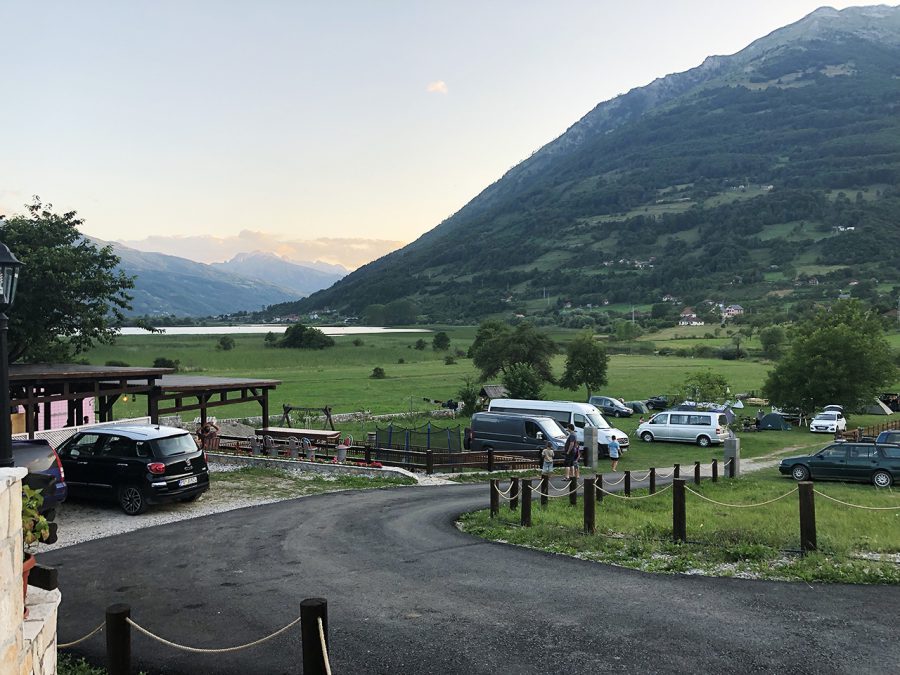
Having had a quick powwow, we decided to go for the latter and to try to paddle the Lim river instead. The Czech website, which we started to trust even more, showed that there was enough water in it. And as our luck might have it, the bus we were on was going to the town of Plav, which was the starting point for this river.
And so, having adapted our plans and accepted the inevitable, we paid the driver for the rest of the trip, and enjoyed the bus ride that took us pass our original stop at Monastery on Morača, further north to Mojkovac, where we started our Tara trip only 5 days before, and then on over the mountains along the populated Lim valley to Plav in the East of the country.
To be continued…
The Team
Last Spring, I was talking to Shimon, a Japanese friend of mine, about his summer plans. As he was going to be in Turkey for holidays with his wife, he was interested to come to Montenegro to repeat my trip from two years before that. I decided to join him as well as I really like the area.

During the European Packrafting Meetup, I also talked about this trip to Živa, a Slovenian friend of mine, who became very interested in it as well. Even though Slovenia and Montenegro used to be parts of Yugoslavia, she had never been there before.
I asked Shimon if it would be ok for her to join. He said yes. And thus, the ‘core of the team’ for this trip was formed.
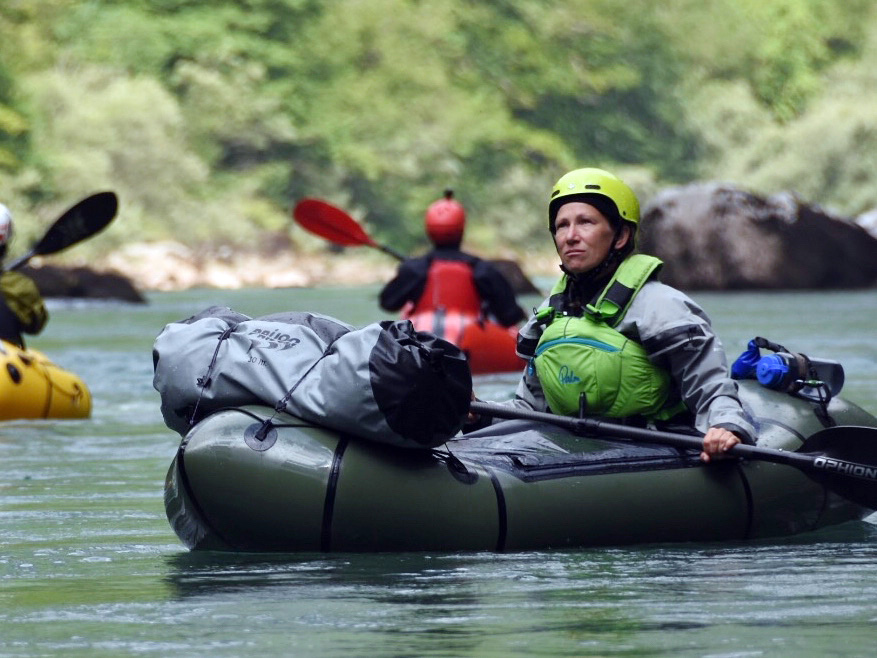
Later, Remi from the Netherlands expressed his interest in the trip too. He only had 5 days, which is why he was able to stay with us only for the first part of the trip.
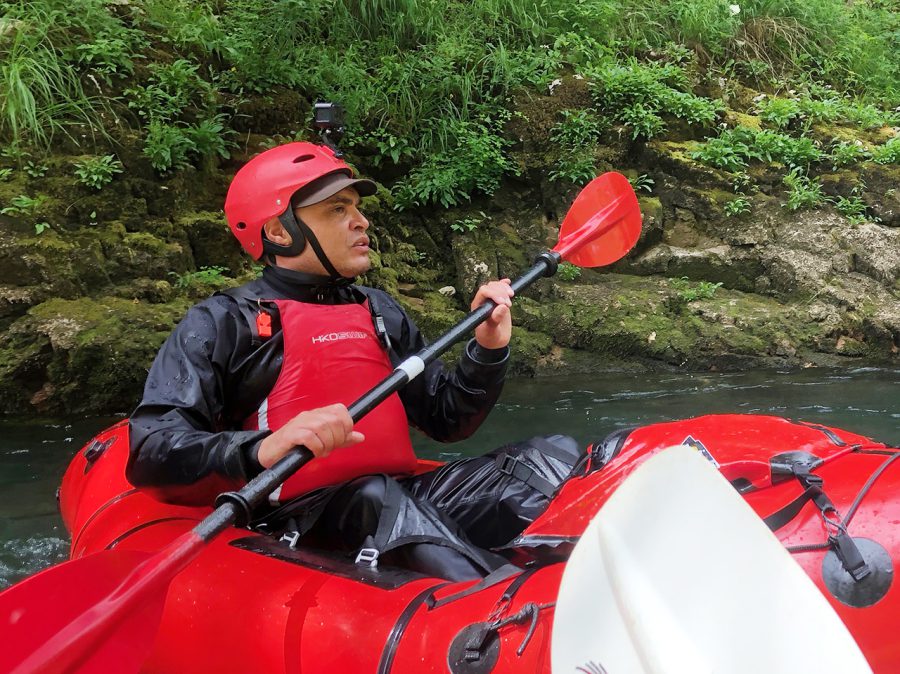
And as he really wanted to paddle the Tara, we decided to start with it. The final two members who joined us were my Russian friends, Ilmar and Sashuk. We were supposed to meet in Slovenia to paddle the Soca a week before this trip to Montenegro, but their visas were refused and we had to reshuffle our plans and meet in Montenegro instead. They had 8 days. Ilmar and I paddled the Tara together before.
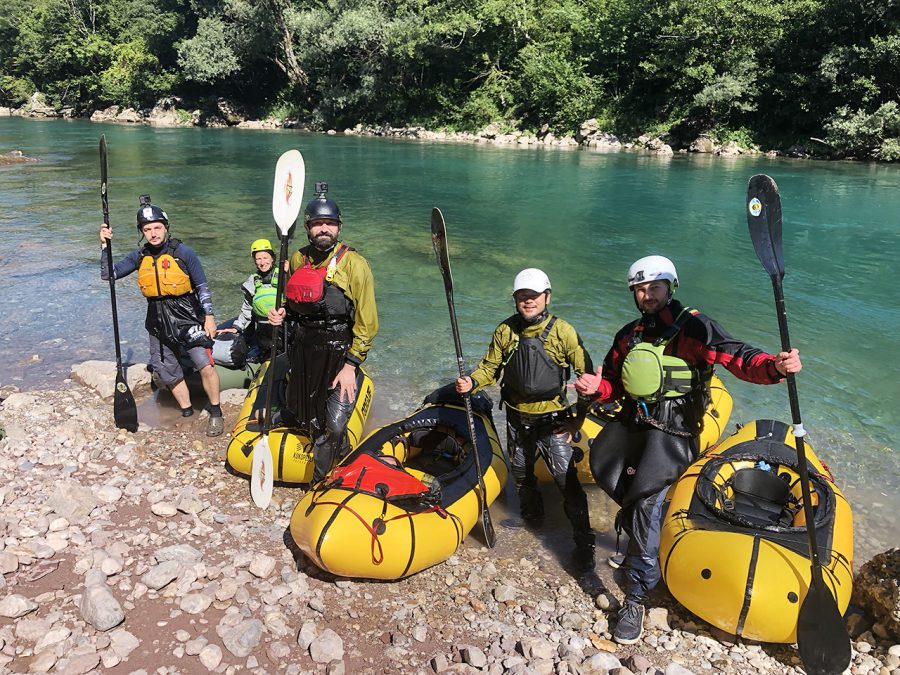
Related Articles
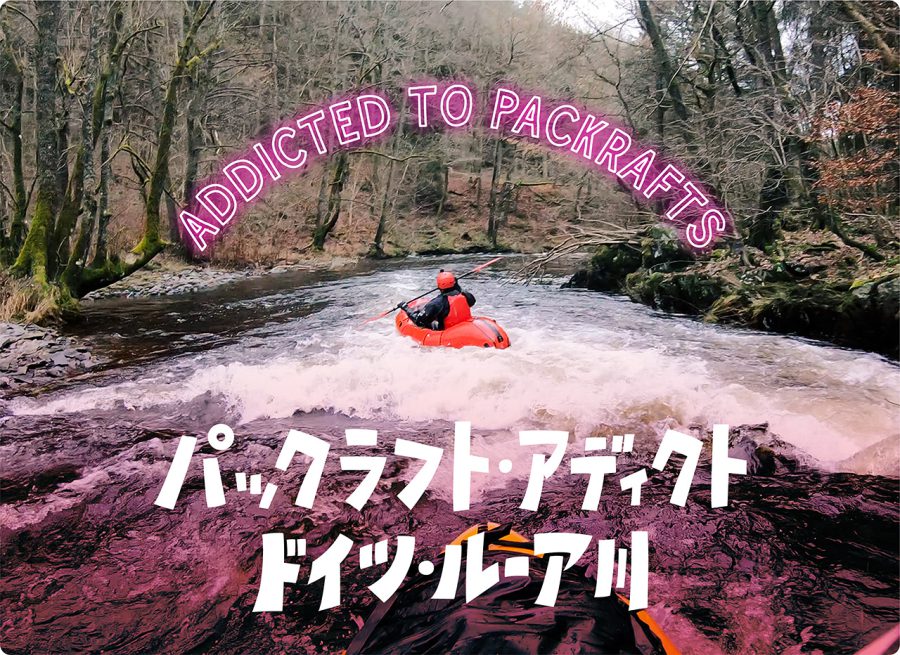
パックラフト・アディクト | #30 ドイツ・ルーア川 2Days Trip
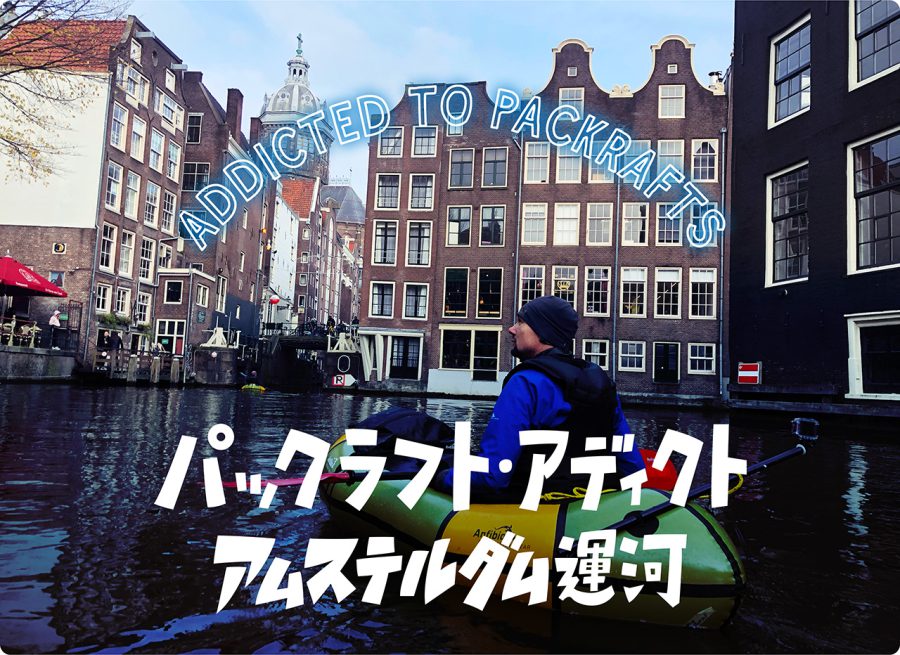
パックラフト・アディクト | #29 アムステルダム運河・デイトリップ
- « 前へ
- 2 / 2
- 次へ »
TAGS:

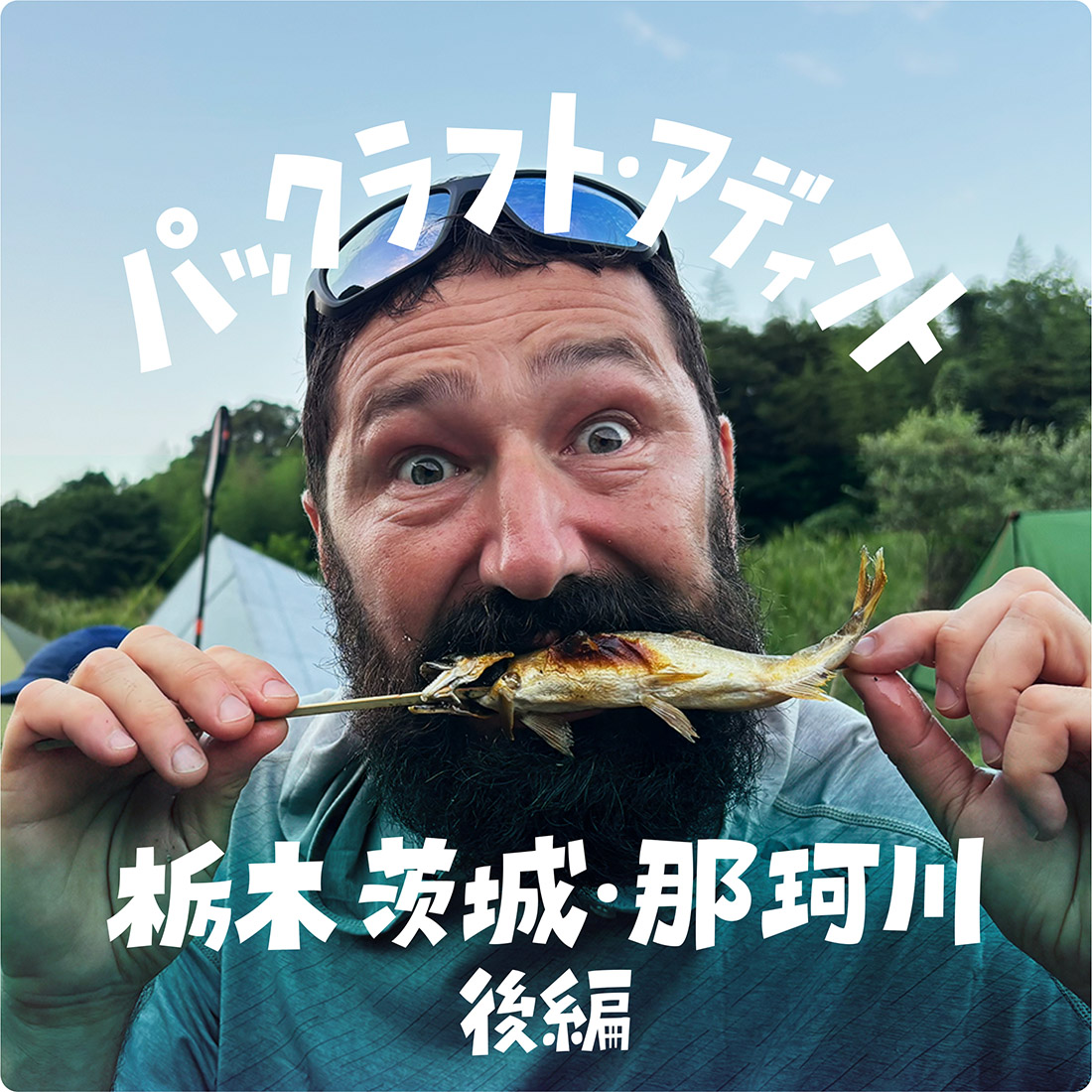
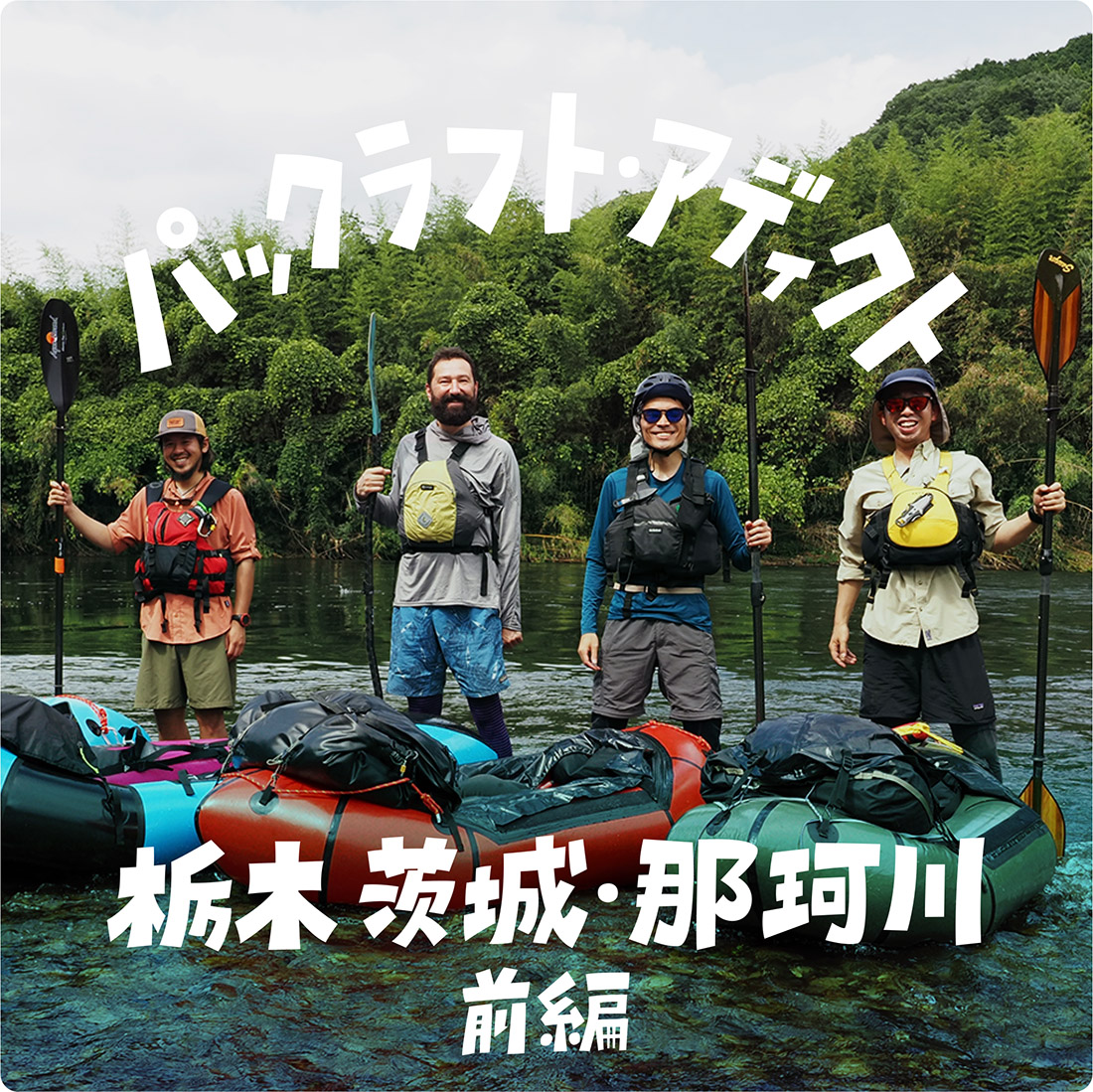
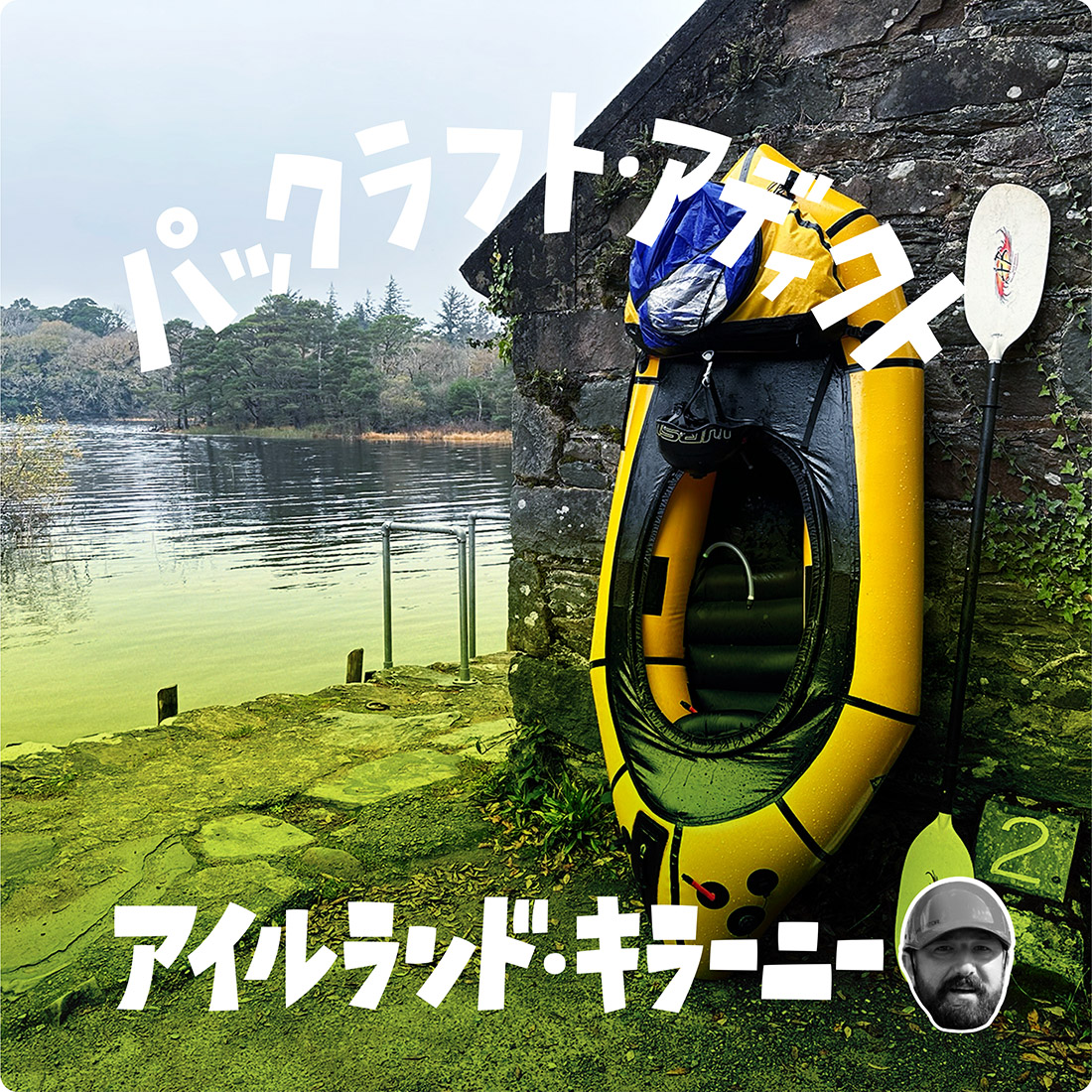

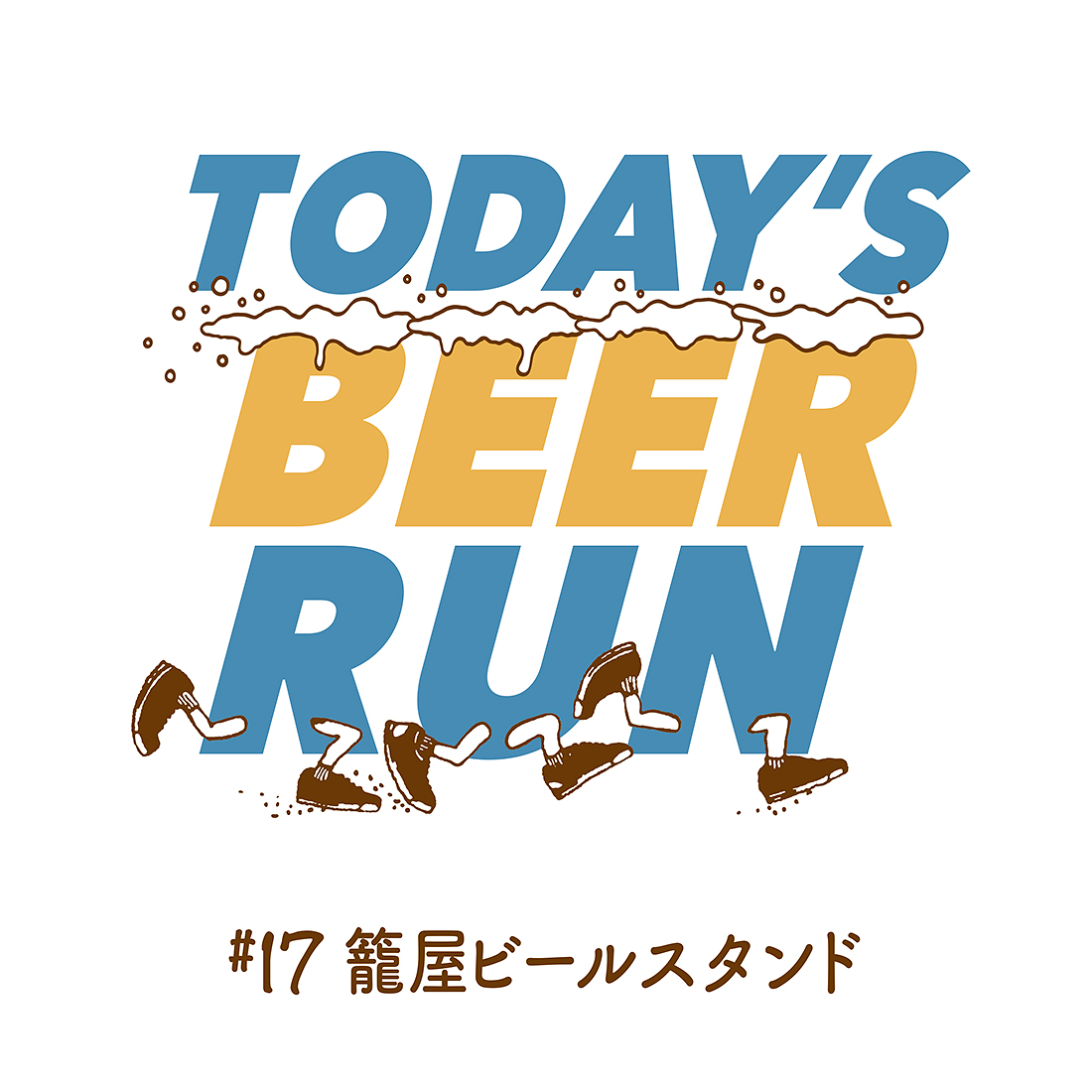








 ULギアを自作するための生地、プラパーツ、ジッパー…
ULギアを自作するための生地、プラパーツ、ジッパー…  ZimmerBuilt | TailWater P…
ZimmerBuilt | TailWater P…  ZimmerBuilt | PocketWater…
ZimmerBuilt | PocketWater…  ZimmerBuilt | DeadDrift P…
ZimmerBuilt | DeadDrift P…  ZimmerBuilt | Arrowood Ch…
ZimmerBuilt | Arrowood Ch…  ZimmerBuilt | SplitShot C…
ZimmerBuilt | SplitShot C…  ZimmerBuilt | Darter Pack…
ZimmerBuilt | Darter Pack…  ZimmerBuilt | QuickDraw (…
ZimmerBuilt | QuickDraw (…  ZimmerBuilt | Micro Pack …
ZimmerBuilt | Micro Pack … 














